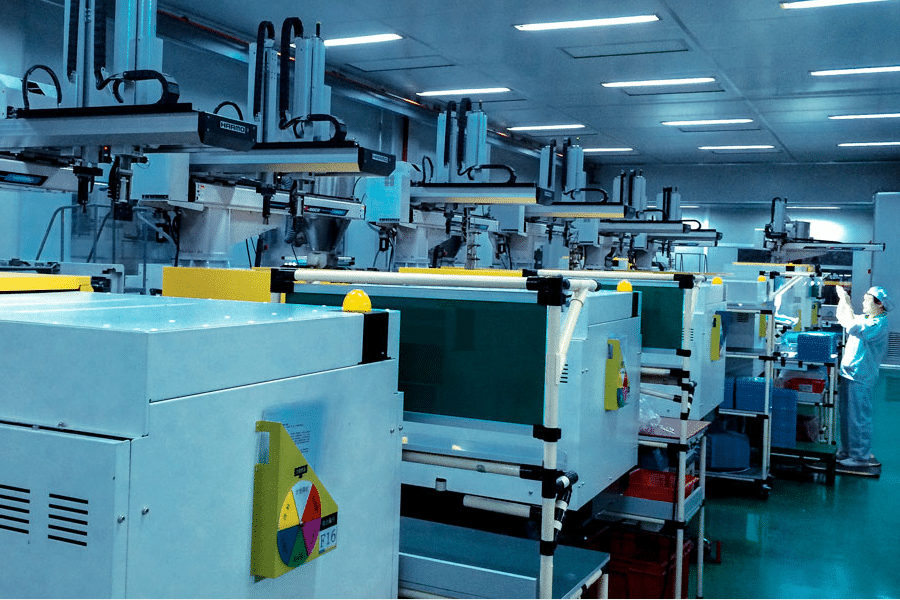Lost wax casting, also known as investment casting or precision casting, is a manufacturing process used to create intricate and complex metal parts. Here’s an overview of how the lost wax casting process works:
- Pattern Creation: The process begins with the creation of a pattern or replica of the desired part. The pattern can be made using various materials such as wax, plastic, or even 3D-printed materials. The pattern is an exact replica of the final part to be cast.
- Mold Creation: The pattern is then used to create a mold, also known as the investment mold. The pattern is typically coated with a refractory material, such as ceramic, to form a ceramic shell or investment mold.
- Shell Preheating: Once the ceramic shell is created, it is preheated to remove any residual moisture and strengthen the mold.
- Wax Removal: The preheated ceramic mold is then heated to melt and remove the wax pattern, leaving behind a cavity in the shape of the desired part.
- Metal Pouring: The empty mold is filled with molten metal. The metal is typically heated to a precise temperature based on the material being cast, such as steel, aluminum, bronze, or other alloys.
- Cooling and Solidification: The molten metal is allowed to cool and solidify within the mold cavity, taking on the shape of the pattern and filling all intricate details.
- Mold Breakout: Once the metal has solidified, the ceramic shell is broken or removed to reveal the cast metal part.
- Finishing: The cast part is then finished through processes such as grinding, sandblasting, machining, or polishing to achieve the desired surface finish and dimensional accuracy.
Lost wax casting is valued for its ability to create highly detailed and complex parts with excellent surface finishes. It is commonly used in industries such as jewelry, aerospace, automotive, and art. The process allows for the production of intricate shapes, thin walls, and internal cavities that may be challenging to achieve through other casting methods.
Lost Wax Casting Applications
Lost wax casting, or investment casting, finds applications across various industries due to its ability to create complex and detailed parts. Here are some common applications of lost wax casting:
- Jewelry: Lost wax casting is widely used in the jewelry industry for creating intricate and customized pieces. It allows jewelers to produce finely detailed designs with precision and accuracy.
- Aerospace: Investment casting is utilized in the aerospace industry for manufacturing turbine blades, engine components, and other complex parts that require high strength, heat resistance, and precise geometries.
- Automotive: Lost wax casting is employed in the automotive sector for producing components such as engine parts, intake manifolds, suspension components, and intricate brackets. The process enables the creation of lightweight parts with intricate designs and tight tolerances.
- Art and Sculpture: Many artists and sculptors utilize lost wax casting to create intricate and detailed sculptures. The process allows for the replication of fine details and textures, enabling the artist’s vision to come to life.
- Dental and Medical: Investment casting is used in the dental and medical industries for creating dental implants, orthopedic implants, and surgical instruments. The process allows for the production of complex shapes tailored to individual patient needs.
- Defense and Firearms: Lost wax casting is applied in the defense industry for manufacturing firearm components, precision gears, and specialized defense equipment. The process offers the ability to create intricate shapes and intricate internal features.
- Electronics: Investment casting is utilized in the electronics industry for producing components like heat sinks, connectors, and housings. The process enables the creation of complex shapes and the integration of precise features required for electronic devices.
- Marine and Offshore: Lost wax casting finds application in the marine industry for manufacturing components such as propellers, impellers, and marine hardware. The process allows for the creation of high-performance parts with complex shapes and efficient designs.
These are just a few examples of the many applications of lost wax casting. The process’s versatility, precision, and ability to create intricate parts make it a popular choice in industries that require complex, detailed, and high-quality components.

